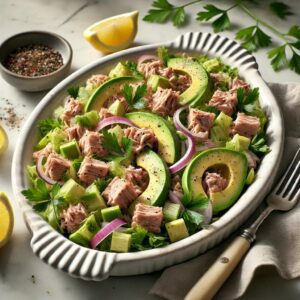

What’s Really in Baby Formula? Breaking Down the Ingredients Parents Should Know


Arya Soleil
For decades, baby formula has been marketed as a safe and scientifically designed alternative to breast milk. Yet, as more parents become conscious of food ingredients, the spotlight has turned to what’s actually inside these formulas—and the findings are concerning.
A viral claim suggests that the #1 recommended baby formula is made of 42% corn syrup, 20% seed oils, 15% soy, and 10% sugar. When we look at the actual ingredient labels of many commercial baby formulas, these percentages appear shockingly accurate.
So, what does this mean for infant health? Is baby formula really as nutritious as advertised, or have corporations sacrificed quality for profit? Let’s break it down.
Why Do Parents Use Baby Formula?
For many parents, baby formula is a lifesaver. While breastfeeding is the gold standard, there are various reasons why some mothers turn to formula:
✔️ Medical issues preventing breastfeeding (e.g., low milk supply, infections, medications).
✔️ Lifestyle and work constraints that make exclusive breastfeeding difficult.
✔️ Adoption and surrogacy, where breast milk isn’t available.
✔️ Personal choice, as some parents prefer formula feeding.
Formula should be a healthy, nourishing alternative, but are mainstream formulas really providing the best nutrition for babies?
What’s Actually Inside Baby Formula?
The ingredients list on many commercial baby formulas is concerning at best. Let’s break down the main components and why they might not be ideal for infant health.
Corn Syrup & Sugar (42% Corn Syrup, 10% Sugar)
One of the most shocking ingredients in baby formula is corn syrup solids—a highly processed sugar substitute.
📌 Why is corn syrup in baby formula?
✔️ It serves as a cheap carbohydrate source to mimic lactose.
✔️ It extends shelf life and improves formula texture.
✔️ It makes formula taste sweeter, encouraging infants to consume more.
🔴 Concerns with Corn Syrup in Baby Formula:
❌ Spikes insulin levels – High sugar intake can lead to insulin resistance and an increased risk of childhood obesity and diabetes.
❌ Linked to gut microbiome disruption – A baby’s digestive system is sensitive, and corn syrup can feed harmful gut bacteria.
❌ Encourages sugar addiction – Babies develop taste preferences early, and excessive sugar can lead to poor eating habits later in life.
Bottom line? Infant formula should mimic breast milk, which contains lactose, not processed sugars like corn syrup and sucrose.
Soy-Based Ingredients (15% Soy Protein, 8.4% Soy Oil)
Many baby formulas contain soy protein isolate and soy oil. While soy is often marketed as a healthy plant-based protein, the reality is more complicated.
📌 Why is soy used in baby formula?
✔️ It provides a cheap, dairy-free protein source.
✔️ It’s widely available and easy to process.
✔️ It’s a substitute for babies who are allergic to dairy-based formulas.
🔴 Concerns with Soy-Based Ingredients in Baby Formula:
❌ High in Phytoestrogens – Soy contains plant estrogens that can mimic human hormones, potentially affecting infant development.
❌ GMO Exposure – Most soy in commercial formulas is genetically modified, raising concerns about pesticide residues.
❌ Thyroid Disruption – Excess soy intake can interfere with thyroid function, which is crucial for a baby’s growth and metabolism.
Bottom line? Soy-based formulas should only be used when absolutely necessary, and parents should seek organic, non-GMO options when possible.
Seed Oils & Industrial Fats (20% Seed Oils)
Another major concern is the use of processed vegetable oils such as:
✔️ Safflower oil
✔️ Canola oil
✔️ Soy oil
📌 Why are seed oils in baby formula?
✔️ They provide essential fatty acids, especially omega-6.
✔️ They act as a cheap fat source to mimic breast milk’s fatty profile.
✔️ They help in the emulsification of formula.
🔴 Concerns with Seed Oils in Baby Formula:
❌ High Omega-6, Low Omega-3 Balance – Breast milk contains a balanced ratio of omega-6 to omega-3, while seed oils skew the ratio toward inflammation.
❌ Linked to Inflammation & Gut Issues – Excessive omega-6 fatty acids from seed oils can promote chronic inflammation.
❌ Often Extracted with Chemicals – Many seed oils are extracted using hexane, a harsh chemical solvent.
Bottom line? Babies need healthy fats, but seed oils are not the best choice. Breast milk contains saturated fats, monounsaturated fats, and DHA—not industrial oils.
What Are the Alternatives?
Parents who want to avoid questionable ingredients in baby formula have a few alternatives.
Breastfeeding (When Possible)
Breast milk is the gold standard for infant nutrition, containing:
✔️ Lactose (a natural carbohydrate, instead of corn syrup).
✔️ DHA & ARA (healthy fats for brain development).
✔️ Live enzymes & antibodies to protect against infections.
For mothers who struggle with milk supply, lactation support, nutrition, and hydration can help.
Homemade Baby Formula (With Caution)
Some parents choose to make their own baby formula using:
✔️ Raw milk-based formulas (for those who tolerate dairy).
✔️ Goat’s milk formula (easier to digest).
✔️ Coconut milk-based formulas (for plant-based alternatives).
🔴 Warning: Making homemade formula requires careful balancing of nutrients. Parents should consult with a holistic pediatrician or nutritionist to ensure the formula is nutritionally complete.
Organic, Clean Baby Formula Brands
For those who need store-bought formula but want better ingredients, some brands offer cleaner alternatives:
✔️ European formulas (HiPP, Holle, Kendamil) – Contain organic lactose, grass-fed milk, and no corn syrup.
✔️ Bobbie (US-based organic formula) – Made with European-style ingredients.
✔️ Goat milk formulas – Closer to human milk than cow’s milk and easier on digestion.
Always read labels carefully and choose formulas that:
✅ Use lactose instead of corn syrup
✅ Avoid soy protein isolates
✅ Contain natural healthy fats instead of seed oils
The Takeaway: What Should Parents Do?
🔹 Be an informed consumer. Read formula ingredient labels and research what goes into your baby’s body.
🔹 Advocate for better options. Demand that formula companies improve their formulations with better ingredients.
🔹 Explore alternatives. If breastfeeding isn’t possible, consider cleaner formulas or carefully designed homemade options.
At the end of the day, your baby deserves the best start in life, and what they consume in their early months can impact their lifelong health.
Recommended Reads

- March 22, 2025
Anti-Inflammatory Breakfasts: Easy Recipes to Start Your Day Right
Home News Healthy Habits & Lifestyle Health Conditions &...


- March 22, 2025
Questioning the FDA: A Deeper Look at the Food and Drug Administration’s Role
Home News Healthy Habits & Lifestyle Health Conditions &...


- March 22, 2025
Make ‘Raw Milk’ Just ‘Milk’ Again: A Closer Look at the Raw Milk Debate
Home News Healthy Habits & Lifestyle Health Conditions &...


- March 22, 2025
The Power of Sweet Potatoes: A Superfood for Eyes, Skin, and Beyond
Home News Healthy Habits & Lifestyle Health Conditions &...


- March 22, 2025
Sugar-Free: A Code Word for “We’ve Replaced It with Something Worse for You”
Home News Healthy Habits & Lifestyle Health Conditions &...


- March 22, 2025
The Evolution of Food: How Modern Diets Are Fueling Chronic Disease
Home News Healthy Habits & Lifestyle Health Conditions &...

What’s Really in Baby Formula? Breaking Down the Ingredients Parents Should Know

For decades, baby formula has been marketed as a safe and scientifically designed alternative to breast milk. Yet, as more parents become conscious of food ingredients, the spotlight has turned to what’s actually inside these formulas—and the findings are concerning.
A viral claim suggests that the #1 recommended baby formula is made of 42% corn syrup, 20% seed oils, 15% soy, and 10% sugar. When we look at the actual ingredient labels of many commercial baby formulas, these percentages appear shockingly accurate.
So, what does this mean for infant health? Is baby formula really as nutritious as advertised, or have corporations sacrificed quality for profit? Let’s break it down.
Why Do Parents Use Baby Formula?
For many parents, baby formula is a lifesaver. While breastfeeding is the gold standard, there are various reasons why some mothers turn to formula:
✔️ Medical issues preventing breastfeeding (e.g., low milk supply, infections, medications).
✔️ Lifestyle and work constraints that make exclusive breastfeeding difficult.
✔️ Adoption and surrogacy, where breast milk isn’t available.
✔️ Personal choice, as some parents prefer formula feeding.
Formula should be a healthy, nourishing alternative, but are mainstream formulas really providing the best nutrition for babies?
What’s Actually Inside Baby Formula?
The ingredients list on many commercial baby formulas is concerning at best. Let’s break down the main components and why they might not be ideal for infant health.
Corn Syrup & Sugar (42% Corn Syrup, 10% Sugar)
One of the most shocking ingredients in baby formula is corn syrup solids—a highly processed sugar substitute.
📌 Why is corn syrup in baby formula?
✔️ It serves as a cheap carbohydrate source to mimic lactose.
✔️ It extends shelf life and improves formula texture.
✔️ It makes formula taste sweeter, encouraging infants to consume more.
🔴 Concerns with Corn Syrup in Baby Formula:
❌ Spikes insulin levels – High sugar intake can lead to insulin resistance and an increased risk of childhood obesity and diabetes.
❌ Linked to gut microbiome disruption – A baby’s digestive system is sensitive, and corn syrup can feed harmful gut bacteria.
❌ Encourages sugar addiction – Babies develop taste preferences early, and excessive sugar can lead to poor eating habits later in life.
Bottom line? Infant formula should mimic breast milk, which contains lactose, not processed sugars like corn syrup and sucrose.
Soy-Based Ingredients (15% Soy Protein, 8.4% Soy Oil)
Many baby formulas contain soy protein isolate and soy oil. While soy is often marketed as a healthy plant-based protein, the reality is more complicated.
📌 Why is soy used in baby formula?
✔️ It provides a cheap, dairy-free protein source.
✔️ It’s widely available and easy to process.
✔️ It’s a substitute for babies who are allergic to dairy-based formulas.
🔴 Concerns with Soy-Based Ingredients in Baby Formula:
❌ High in Phytoestrogens – Soy contains plant estrogens that can mimic human hormones, potentially affecting infant development.
❌ GMO Exposure – Most soy in commercial formulas is genetically modified, raising concerns about pesticide residues.
❌ Thyroid Disruption – Excess soy intake can interfere with thyroid function, which is crucial for a baby’s growth and metabolism.
Bottom line? Soy-based formulas should only be used when absolutely necessary, and parents should seek organic, non-GMO options when possible.
Seed Oils & Industrial Fats (20% Seed Oils)
Another major concern is the use of processed vegetable oils such as:
✔️ Safflower oil
✔️ Canola oil
✔️ Soy oil
📌 Why are seed oils in baby formula?
✔️ They provide essential fatty acids, especially omega-6.
✔️ They act as a cheap fat source to mimic breast milk’s fatty profile.
✔️ They help in the emulsification of formula.
🔴 Concerns with Seed Oils in Baby Formula:
❌ High Omega-6, Low Omega-3 Balance – Breast milk contains a balanced ratio of omega-6 to omega-3, while seed oils skew the ratio toward inflammation.
❌ Linked to Inflammation & Gut Issues – Excessive omega-6 fatty acids from seed oils can promote chronic inflammation.
❌ Often Extracted with Chemicals – Many seed oils are extracted using hexane, a harsh chemical solvent.
Bottom line? Babies need healthy fats, but seed oils are not the best choice. Breast milk contains saturated fats, monounsaturated fats, and DHA—not industrial oils.
What Are the Alternatives?
Parents who want to avoid questionable ingredients in baby formula have a few alternatives.
Breastfeeding (When Possible)
Breast milk is the gold standard for infant nutrition, containing:
✔️ Lactose (a natural carbohydrate, instead of corn syrup).
✔️ DHA & ARA (healthy fats for brain development).
✔️ Live enzymes & antibodies to protect against infections.
For mothers who struggle with milk supply, lactation support, nutrition, and hydration can help.
Homemade Baby Formula (With Caution)
Some parents choose to make their own baby formula using:
✔️ Raw milk-based formulas (for those who tolerate dairy).
✔️ Goat’s milk formula (easier to digest).
✔️ Coconut milk-based formulas (for plant-based alternatives).
🔴 Warning: Making homemade formula requires careful balancing of nutrients. Parents should consult with a holistic pediatrician or nutritionist to ensure the formula is nutritionally complete.
Organic, Clean Baby Formula Brands
For those who need store-bought formula but want better ingredients, some brands offer cleaner alternatives:
✔️ European formulas (HiPP, Holle, Kendamil) – Contain organic lactose, grass-fed milk, and no corn syrup.
✔️ Bobbie (US-based organic formula) – Made with European-style ingredients.
✔️ Goat milk formulas – Closer to human milk than cow’s milk and easier on digestion.
Always read labels carefully and choose formulas that:
✅ Use lactose instead of corn syrup
✅ Avoid soy protein isolates
✅ Contain natural healthy fats instead of seed oils
The Takeaway: What Should Parents Do?
🔹 Be an informed consumer. Read formula ingredient labels and research what goes into your baby’s body.
🔹 Advocate for better options. Demand that formula companies improve their formulations with better ingredients.
🔹 Explore alternatives. If breastfeeding isn’t possible, consider cleaner formulas or carefully designed homemade options.
At the end of the day, your baby deserves the best start in life, and what they consume in their early months can impact their lifelong health.
Recommended Reads

- March 22, 2025
Anti-Inflammatory Breakfasts: Easy Recipes to Start Your Day Right
Home News Healthy Habits & Lifestyle Health Conditions &...


- March 22, 2025
Questioning the FDA: A Deeper Look at the Food and Drug Administration’s Role
Home News Healthy Habits & Lifestyle Health Conditions &...


- March 22, 2025
Make ‘Raw Milk’ Just ‘Milk’ Again: A Closer Look at the Raw Milk Debate
Home News Healthy Habits & Lifestyle Health Conditions &...


- March 22, 2025
The Power of Sweet Potatoes: A Superfood for Eyes, Skin, and Beyond
Home News Healthy Habits & Lifestyle Health Conditions &...


- March 22, 2025
Sugar-Free: A Code Word for “We’ve Replaced It with Something Worse for You”
Home News Healthy Habits & Lifestyle Health Conditions &...


- March 22, 2025
The Evolution of Food: How Modern Diets Are Fueling Chronic Disease
Home News Healthy Habits & Lifestyle Health Conditions &...



